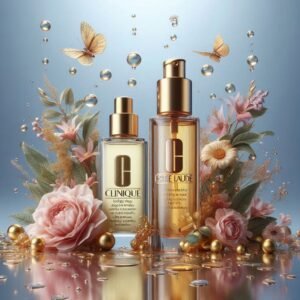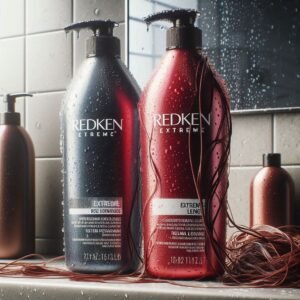Paul Mitchell Vs Biolage 2024 – As you stand in front of the hair care aisle, you’re faced with a formidable decision: Paul Mitchell or Biolage? Two industry giants with distinct philosophies and product lines. You’ve likely heard of their popular shampoos and styling products, but which one truly delivers? You’re about to find out.
From their commitment to sustainability and cruelty-free formulations to their professional and retail product offerings, we’re about to put these brands under the microscope. But first, let’s set the stage: what drives these companies, and how do their histories shape their products? The answer might just surprise you.
A Quick Overview
- Paul Mitchell and Biolage share similar brand values, focusing on cruelty-free and environmentally responsible products, but differ in their product offerings and target markets.
- Paul Mitchell’s shampoos tend to have a lower pH level, making them suitable for color-treated hair, while Biolage’s shampoos have a slightly higher pH level, benefiting dry or damaged hair.
- Both brands offer a range of styling products catering to different hair holding needs, with Paul Mitchell focusing on natural extracts and Biolage incorporating antioxidants and plant extracts.
- Paul Mitchell and Biolage provide customizable hair treatment and mask options, offering deep nourishment and repair for damaged hair, with Paul Mitchell’s Awapuhi Wild Ginger Moisturizing Lather Rinse and Biolage’s Fiberstrong Mask being popular choices.
- Both brands prioritize vegan and cruelty-free options, with Paul Mitchell holding the Leaping Bunny certification and Biolage boasting PETA Approval, guaranteeing their products are free from animal-derived ingredients and testing.
Brand History and Philosophy

As you explore into the world of professional hair care, you’ll notice two prominent brands: Paul Mitchell and Biolage.
Founded in 1980 by John Paul DeJoria and Paul Mitchell, Paul Mitchell has been leading the industry with its commitment to cruelty-free and environmentally responsible products, whereas Biolage, introduced in 1990 by Matrix, has been focused on providing high-quality, plant-based solutions for salon professionals.
Over the years, both brands have undergone significant brand evolution, refining their company mission to cater to the changing needs of the industry.
Paul Mitchell’s mission is to empower salon professionals with innovative products and education, while Biolage aims to provide sustainable, eco-friendly solutions.
Product Lines and Offerings
As you explore the product lines and offerings of Paul Mitchell and Biolage, you’ll notice distinct differences in their hair care ranges and product variety.
They each have a unique focus on key ingredients, which sets them apart from one another.
Hair Care Ranges
Both Paul Mitchell and Biolage offer distinct hair care ranges, comprising multiple product lines that cater to specific hair types, concerns, and styling needs.
You’ll find that each brand’s ranges are designed to help you create personalized hair care routines that address your unique needs and preferences.
Paul Mitchell’s ranges focus on specific hair concerns, such as color-treated hair, dryness, or frizz, while Biolage’s ranges are organized around hair textures, like dry, damaged, or fine hair.
When choosing a hair care range, consider your personal preferences, hair type, and styling habits. This will help you narrow down the options and find the products that work best for you.
Product Variety Offered
Paul Mitchell and Biolage offer a diverse array of product lines, each tailored to address specific hair care needs and concerns, ranging from shampoos and conditioners to styling products and treatments.
This extensive product selection allows you to choose the perfect fit for your hair type and style.
Paul Mitchell boasts a broader product breadth, with over 100 products across 15 lines, including Neuro, Awapuhi Wild Ginger, and Mitch.
Biolage, on the other hand, offers around 50 products across 7 lines, such as Hydrasource, Scalpsync, and Colorlast.
Both brands cater to various hair concerns, from color-treated hair to dry and damaged locks.
With such a wide range of options, you’re likely to find a product that suits your unique hair needs.
Key Ingredient Focus
Paul Mitchell’s product lines, such as Neuro and Awapuhi Wild Ginger, boast a strong focus on key ingredients like plant-derived antioxidants and nourishing plant oils, which help to repair and protect your hair.
You’ll notice that their formulas often feature natural extracts, such as lavender and chamomile, which soothe and calm your scalp.
Additionally, Paul Mitchell incorporates plant-based boosters like argan oil and coconut oil to deeply nourish and moisturize your locks.
This emphasis on natural ingredients allows you to achieve healthy, vibrant hair that looks and feels amazing.
Shampoo and Conditioner Comparison
When evaluating the shampoo and conditioner offerings from Paul Mitchell and Biolage, vital to ponder is to examine the formulations, pH levels, and ingredient lists to determine which brand better addresses your hair type and needs.
You’ll notice that Paul Mitchell’s shampoos tend to have a lower pH level, which can be beneficial for color-treated hair, whereas Biolage’s shampoos have a slightly higher pH level, making them more suitable for dry or damaged hair.
With regard to moisturizing power, both brands offer hydrating formulas, but Biolage’s shampoos are particularly known for their scalp health benefits, thanks to ingredients like antioxidants and plant extracts.
Styling Product Showdown
When choosing between Paul Mitchell and Biolage styling products, you’ll want to ponder your hair’s texture, as it plays a significant role in determining the right product for you.
If you have fine or limp hair, you’ll likely need a lightweight product that adds volume and texture, whereas thicker hair may require a stronger hold.
As you explore the styling product offerings from these two brands, pay attention to the hold and finish they provide, as these factors will greatly impact your overall styling experience.
Hair Texture Matters
Your hair’s natural texture plays a significant role in determining which styling products will work best for you, as it affects how well they absorb, distribute, and hold onto the product.
Hair texture variation can greatly impact the effectiveness of styling products, and it’s vital to bear this in mind when choosing between Paul Mitchell and Biolage.
If you have low porosity hair, you’ll want products that help with absorption, like Biolage’s Hydrasource line.
Dry or damaged hair requires more nourishing products, while oily hair needs lightweight, oil-controlling formulas.
If your hair is prone to breakage, look for products that provide extra moisturizing and strengthening benefits, like Paul Mitchell’s Neuro Unscented line.
Hold and Finish
You’ll want to ponder the level of hold and finish you need from your styling products, as this can substantially impact the overall look and longevity of your hairstyle.
Depending on your hair type and styling expectations, you may require a light hold for effortless, undone looks or a strong hold for sleek, polished styles.
Paul Mitchell and Biolage offer a range of products catering to different hair holding needs. Paul Mitchell’s Neuro Unclip and Biolage’s Styling Cream provide light to medium hold, while Paul Mitchell’s Fast Form and Biolage’s Gelee offer medium to strong hold.
Consider your hair’s natural texture, desired style, and the level of hold you need to achieve your desired look. By choosing the right product, you can achieve a salon-quality finish that meets your styling expectations.
Hair Treatment and Mask Options
Both Paul Mitchell and Biolage offer a range of hair treatment and mask options, with Paul Mitchell’s Awapuhi Wild Ginger Moisturizing Lather Rinse and Biolage’s Fiberstrong Mask providing intense nourishment and repair for damaged hair.
You can indulge in hair pampering rituals with these treatments, tailored to address specific hair concerns.
Deep nourishment: Their masks and treatments are designed to penetrate deep into your hair, providing long-lasting hydration and repair.
Customizable: Both brands offer a range of products that cater to different hair types and concerns, allowing you to create a personalized hair care routine.
Professional results: With Paul Mitchell and Biolage, you can achieve salon-quality results at home, giving you the confidence to take your hair care to the next level.
Ingredients and Key Formulations
When it comes to achieving professional results at home, the ingredients and key formulations of Paul Mitchell and Biolage‘s products play a vital role in delivering nourishment and repair to your hair.
You’ll notice that both brands rely on natural extracts, such as plant-derived oils and antioxidants, to provide hydration and protection.
Paul Mitchell’s products often feature custom blends of these extracts, tailored to specific hair types and concerns.
Biolage, on the other hand, incorporates a range of botanicals, including algae and flower extracts, to create unique formulations that target specific hair needs.
Cruelty-Free and Vegan Options
As you explore the cruelty-free and vegan options offered by Paul Mitchell and Biolage, you’ll want to examine the vegan product range of each brand, considering the specific products that align with your values.
You’ll also need to investigate the cruelty-free certifications held by each brand, such as the Leaping Bunny logo or PETA certification.
Vegan Product Range
Your hair care routine should include products that align with your values, which is why finding the right fit is vital to explore the vegan product ranges offered by Paul Mitchell and Biolage.
If you’re driven by vegan motivations, you’ll want to know that both brands cater to your needs.
Paul Mitchell’s vegan range: Paul Mitchell offers a variety of vegan-friendly products, including shampoos, conditioners, and styling products. Their eco-friendly packaging is a bonus for those who prioritize sustainability.
Biolage’s vegan options: Biolage also offers vegan-friendly products, although their range is slightly more limited. Look for their plant-based formulas and recyclable packaging.
Both brands focus on natural, plant-based ingredients that are free from animal-derived components. This confirms that your hair care routine aligns with your values and promotes a healthier planet.
Cruelty-Free Certifications
You can take comfort in knowing that both Paul Mitchell and Biolage have obtained prominent cruelty-free certifications, ensuring their products meet rigorous standards for animal welfare and align with your values.
Paul Mitchell holds the Leaping Bunny certification, a globally recognized symbol of cruelty-free excellence.
Biolage, on the other hand, boasts PETA Approval, a prestigious recognition of their commitment to animal welfare.
These certifications guarantee that both brands refrain from testing on animals, sourcing from suppliers who test on animals, or allowing third-party testing.
You can trust that the products from these brands are free from animal-derived ingredients and by-products, making them suitable for vegans and animal lovers alike.
Animal Testing Policy
Paul Mitchell and Biolage both implement strict animal testing policies, guaranteeing that their products are developed and manufactured without involving animal testing at any stage.
As you explore their cruelty-free commitments, you’ll notice a strong emphasis on testing transparency.
Both brands condemn animal testing and prioritize humane practices in their product development.
Paul Mitchell and Biolage openly disclose their testing policies, providing you with confidence in their cruelty-free claims.
Both brands partner with reputable organizations, such as PETA and the Leaping Bunny Program, to guarantee their products meet rigorous cruelty-free standards.
Price Points and Value Analysis
When evaluating the price points of Paul Mitchell and Biolage products, it’s essential to weigh the concentration of active ingredients, formulation, and packaging size to accurately determine the value for money.
You’ll notice that both brands employ different pricing strategies, which can affect your cost effectiveness analysis.
Paul Mitchell tends to focus on premium, high-concentration formulas, justifying higher price points.
Biolage, on the other hand, offers a range of products with varying concentrations, making it necessary to assess the price per ounce or application.
By doing so, you’ll uncover which products offer the best value for your budget.
Professional Vs. Retail Product Lines
Both Paul Mitchell and Biolage offer distinct product lines, each catering to different distribution channels and customer needs, with professional lines typically boasting higher concentrations and more specialized formulas than their retail counterparts.
As a hair care enthusiast, you might wonder what sets these lines apart.
Concentration of active ingredients: Professional lines often have higher concentrations of active ingredients, making them more potent and effective.
Formulation complexity: Professional products tend to have more complex formulations, addressing specific hair concerns and needs.
Industry compliance: Professional lines are designed to meet industry expectations and professional standards, ensuring consistent results and quality.
When choosing between Paul Mitchell and Biolage, consider your hair type, needs, and the level of expertise you have in using hair care products. This will help you decide whether a professional or retail line is right for you.
User Reviews and Ratings Breakdown
You can gain valuable insights into the performance of Paul Mitchell and Biolage products by examining user reviews and ratings, which provide a thorough breakdown of their strengths and weaknesses.
When analyzing these reviews, it is vital to take into account user demographics, such as age, hair type, and styling habits, to understand how the products perform for different individuals.
Review authenticity is also pivotal, as fake or biased reviews can skew the overall rating.
By examining the distribution of ratings and the language used in reviews, you can identify patterns and trends that reveal the products’ effectiveness.
For instance, you might find that Paul Mitchell’s products receive high ratings from users with curly hair, while Biolage’s products are praised by those with color-treated hair.
Celebrity and Influencer Endorsements
Since their inception, Paul Mitchell and Biolage have leveraged celebrity and influencer endorsements to promote their product lines, often partnering with popular figures who embody their brand values and aesthetic.
These partnerships not only increase brand awareness but also help to build credibility and trust among consumers. You, as a potential customer, are likely influenced by the opinions of celebrities and influencers you admire.
Paul Mitchell’s celebrity partnerships include collaborations with celebrities like Jennifer Lopez and Katy Perry, who embody the brand’s fun and vibrant personality.
Biolage has partnered with popular beauty influencers on social media, such as NikkieTutorials and James Charles, to showcase their products’ benefits and results.
Both brands and influencers benefit from these partnerships, as they increase followers, drive sales, and promote brand values.
Sustainability and Eco-Friendliness Efforts
As consumers increasingly prioritize eco-friendly practices, Paul Mitchell and Biolage have responded by implementing sustainable initiatives throughout their product development and manufacturing processes.
Paul Mitchell has made significant strides in eco-friendly packaging, reducing waste and using recyclable materials whenever possible. They’ve also committed to sustainable sourcing, ensuring that their ingredients are obtained in a way that minimizes environmental impact.
Biolage, on the other hand, has focused on reducing their carbon footprint through energy-efficient manufacturing facilities and sustainable transportation methods.
Both brands are making a conscious effort to reduce their environmental footprint, and as a consumer, you can feel good about supporting their eco-friendly initiatives.
Frequently Asked Questions
Can I Use Paul Mitchell and Biolage Products on Colored Hair?
You can use Paul Mitchell and Biolage products on colored hair, but be cautious; look for Color Protect formulas to minimize Hair Damage, as some products may contain harsh ingredients that can strip color and cause damage.
Are Paul Mitchell and Biolage Products Safe for Pregnant Women?
When you’re pregnant, you’re right to prioritize prenatal hair care and address pregnancy safety concerns. You’ll want to check the ingredient labels for harsh chemicals and opt for gentle, nourishing products that cater to your sensitive scalp and hair needs.
Can I Use Paul Mitchell and Biolage Products on Hair Extensions?
When using hair extensions, you’ll want to guarantee the products you choose are compatible with the extension material. For instance, if you have tape-in or clip-in extensions made of human hair, you can use Paul Mitchell and Biolage products, but always verify the manufacturer’s guidelines first.
Do Paul Mitchell and Biolage Offer Any Loyalty or Rewards Programs?
You can capitalize on brand loyalty by joining Paul Mitchell’s or Biolage’s rewards programs, activating customer perks like exclusive discounts, free products, and early access to new launches, making you feel valued and part of their beauty community.
Are Paul Mitchell and Biolage Products Available in Travel-Sized Options?
You’ll be thrilled to know that both brands offer travel-sized options, perfect for your travel essentials kit. These mini marvels pack a punch, providing the same quality results in convenient, compact sizes ideal for on-the-go styling.
Conclusion
You’ve made it to the end of this exhaustive guide, and by now, you’ve gained a deep understanding of the similarities and differences between Paul Mitchell and Biolage.
Both brands offer a range of products catering to various hair types and needs.
While Paul Mitchell excels in empowering salon professionals, Biolage prioritizes eco-friendly solutions.
Ultimately, the choice between these two brands depends on your individual preferences, hair type, and values.



